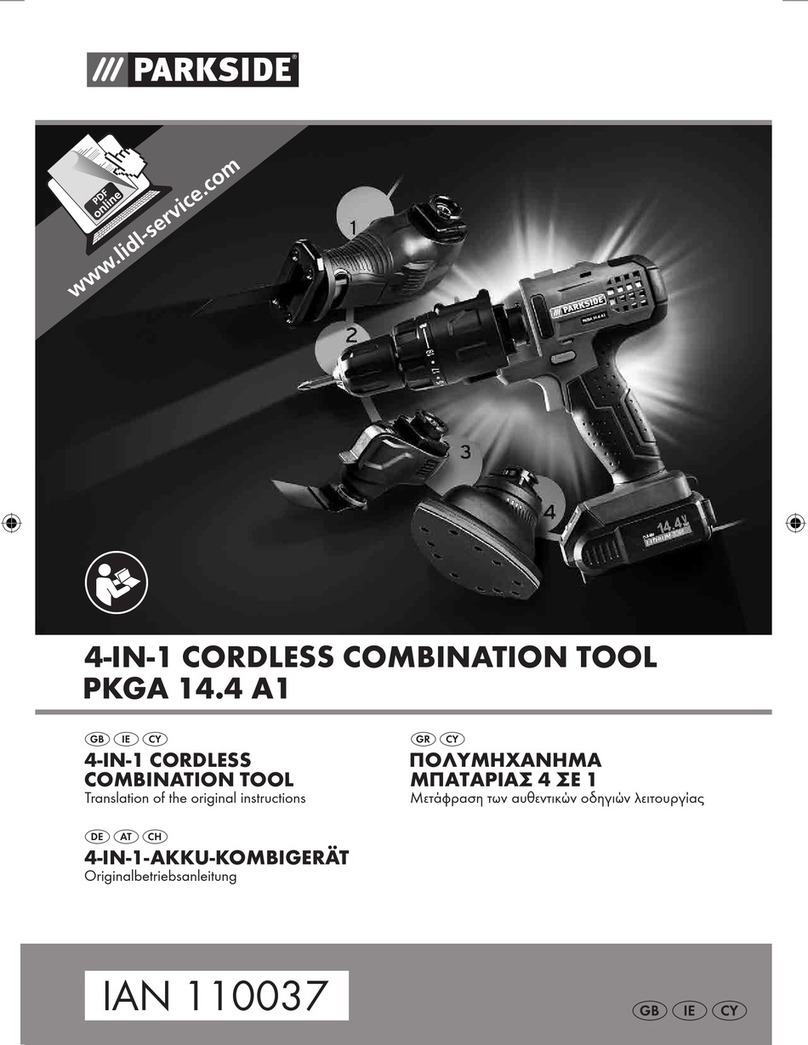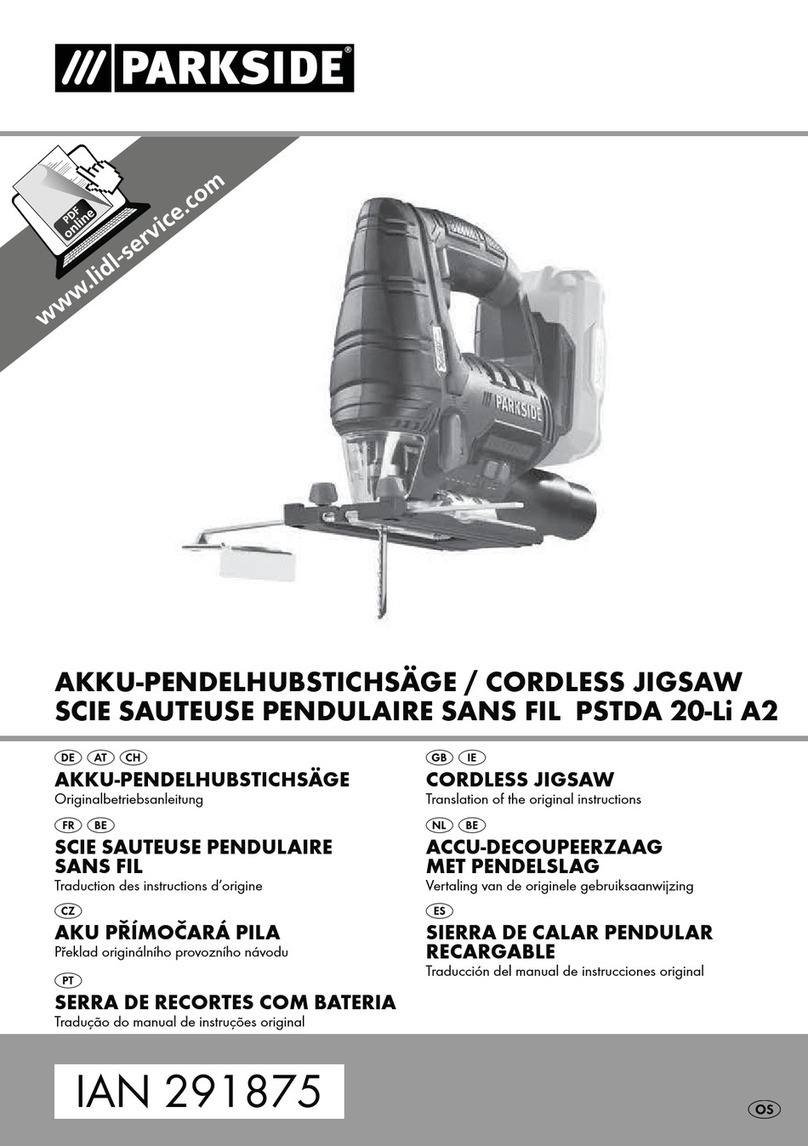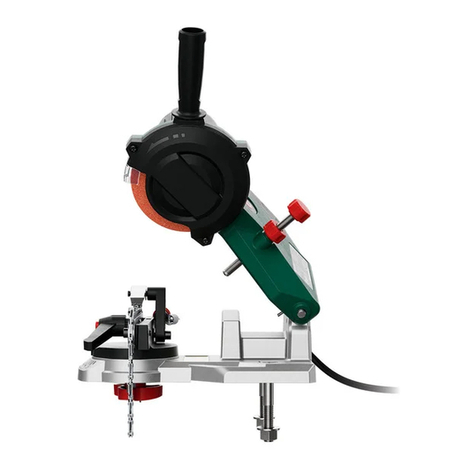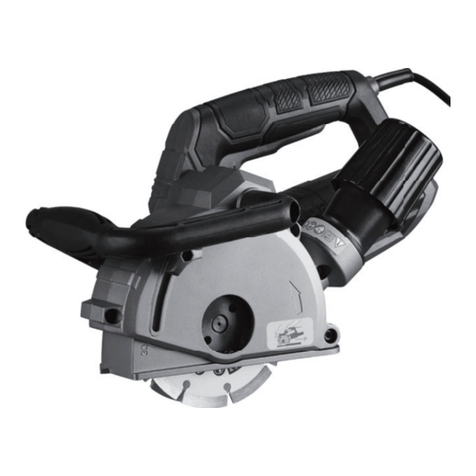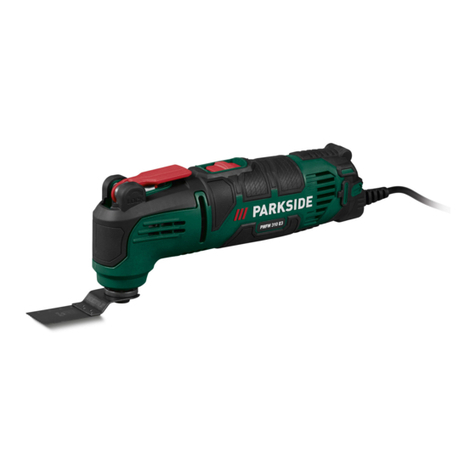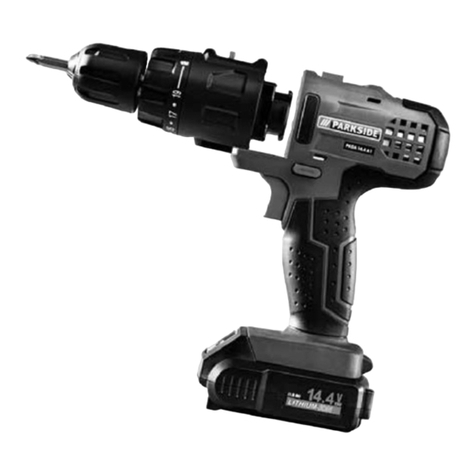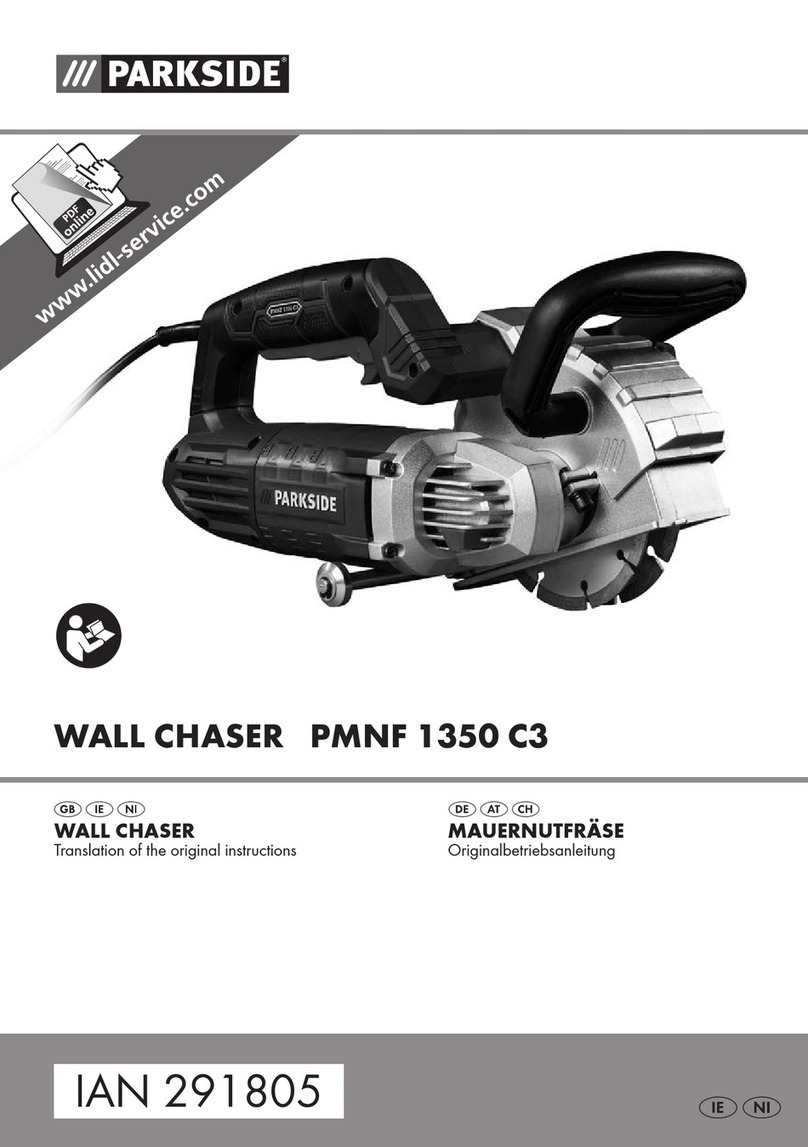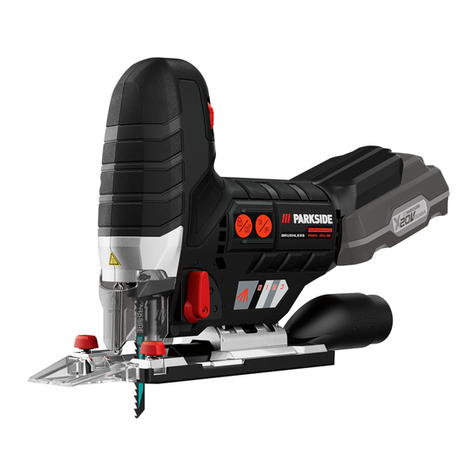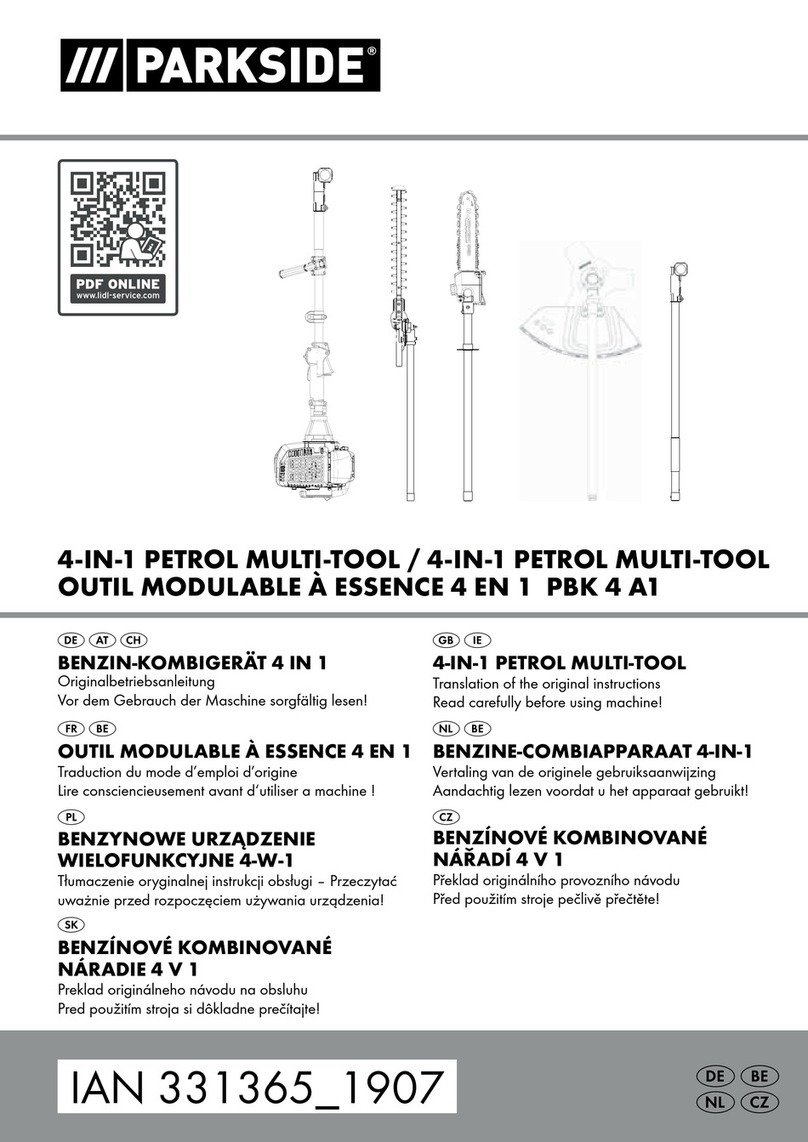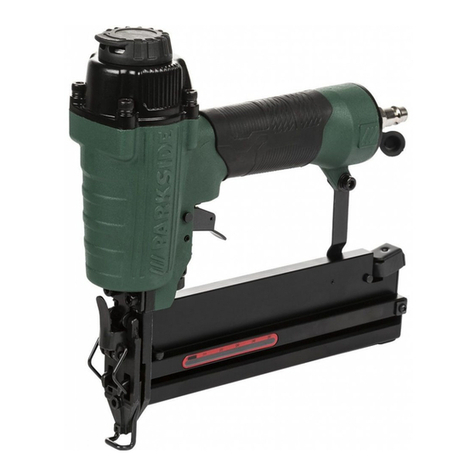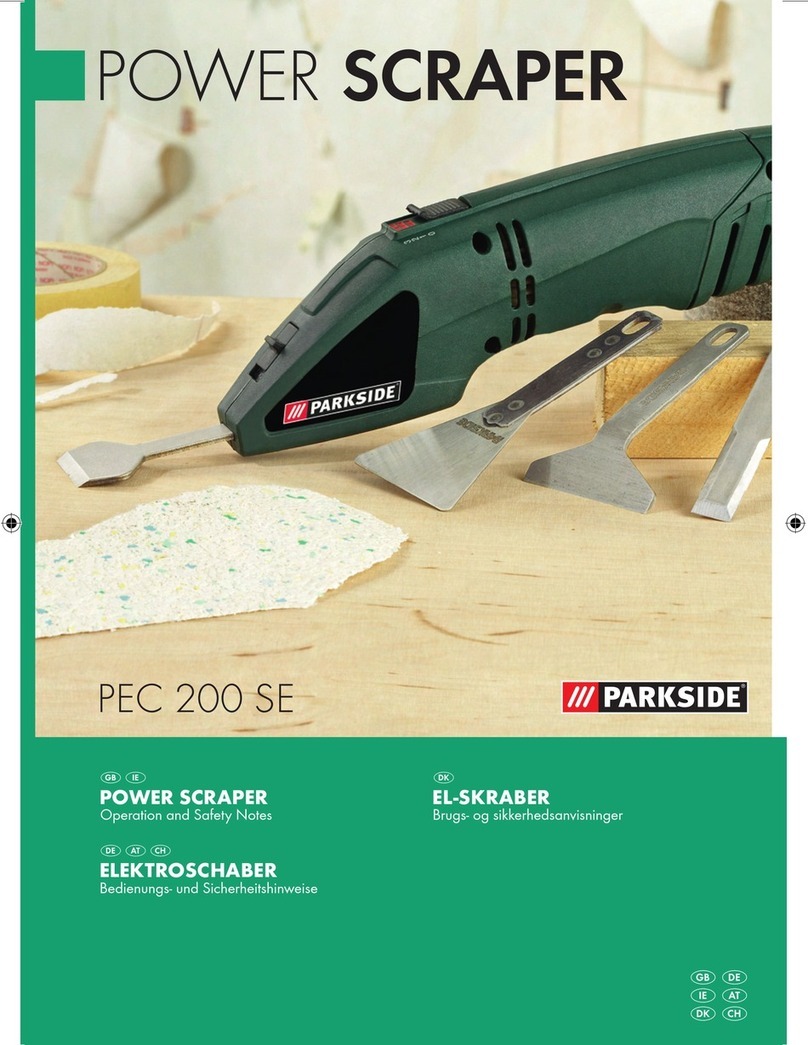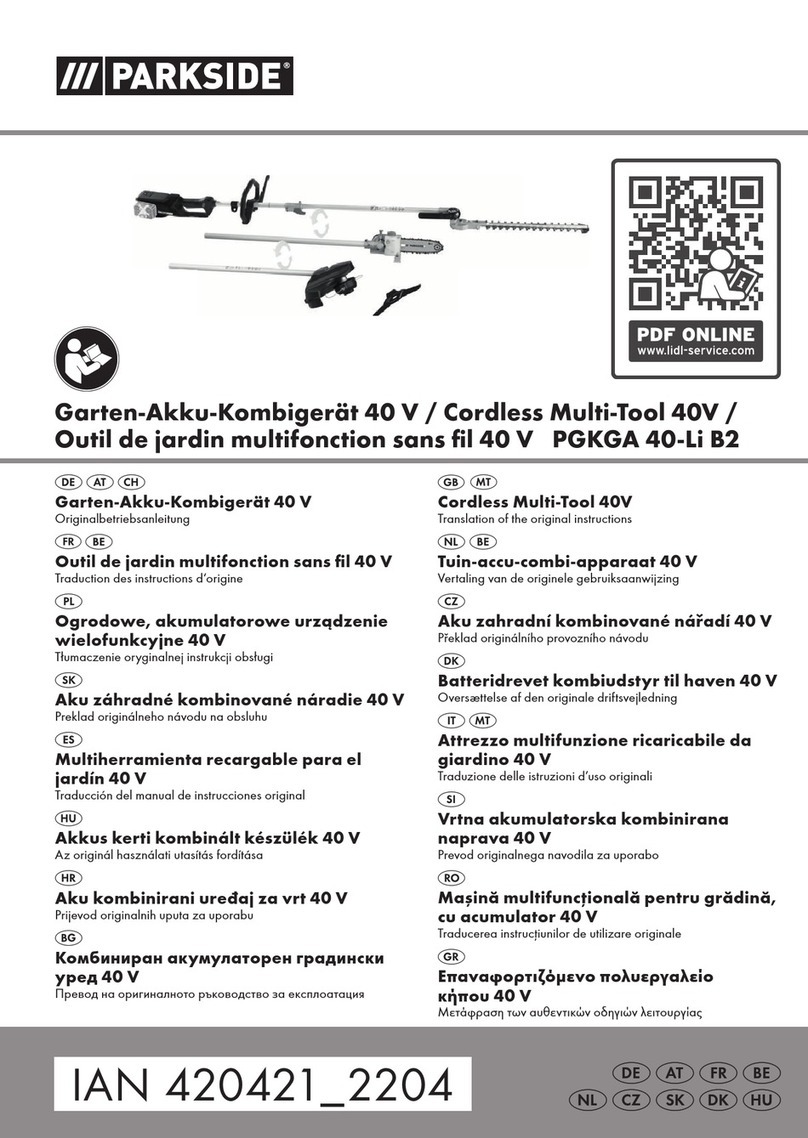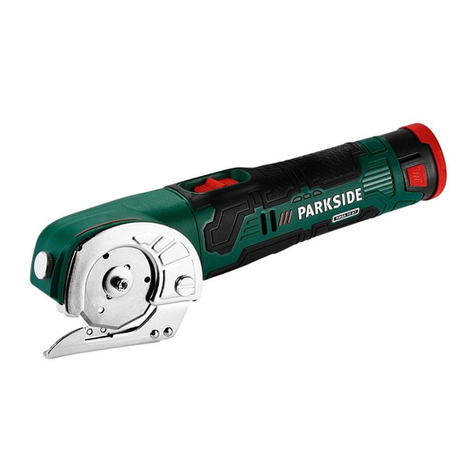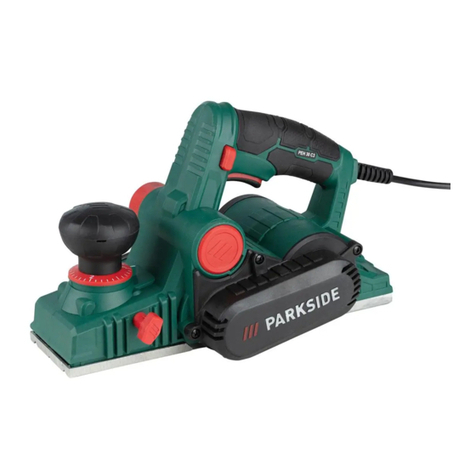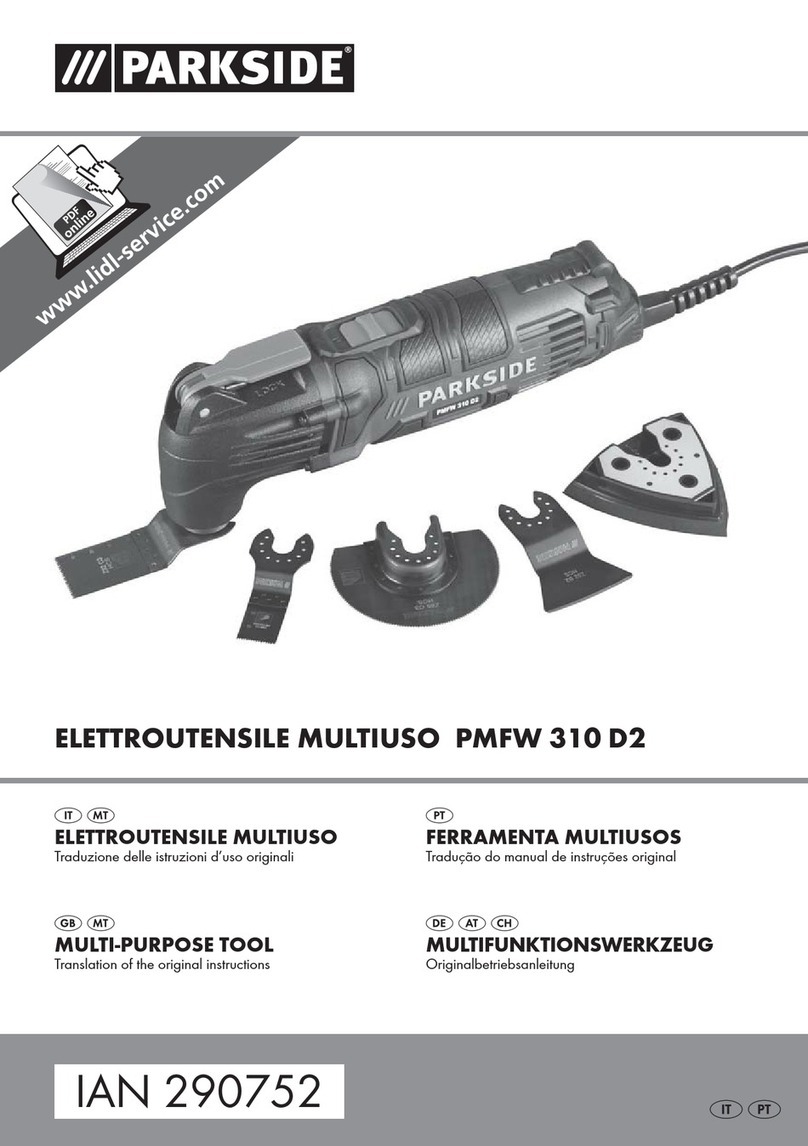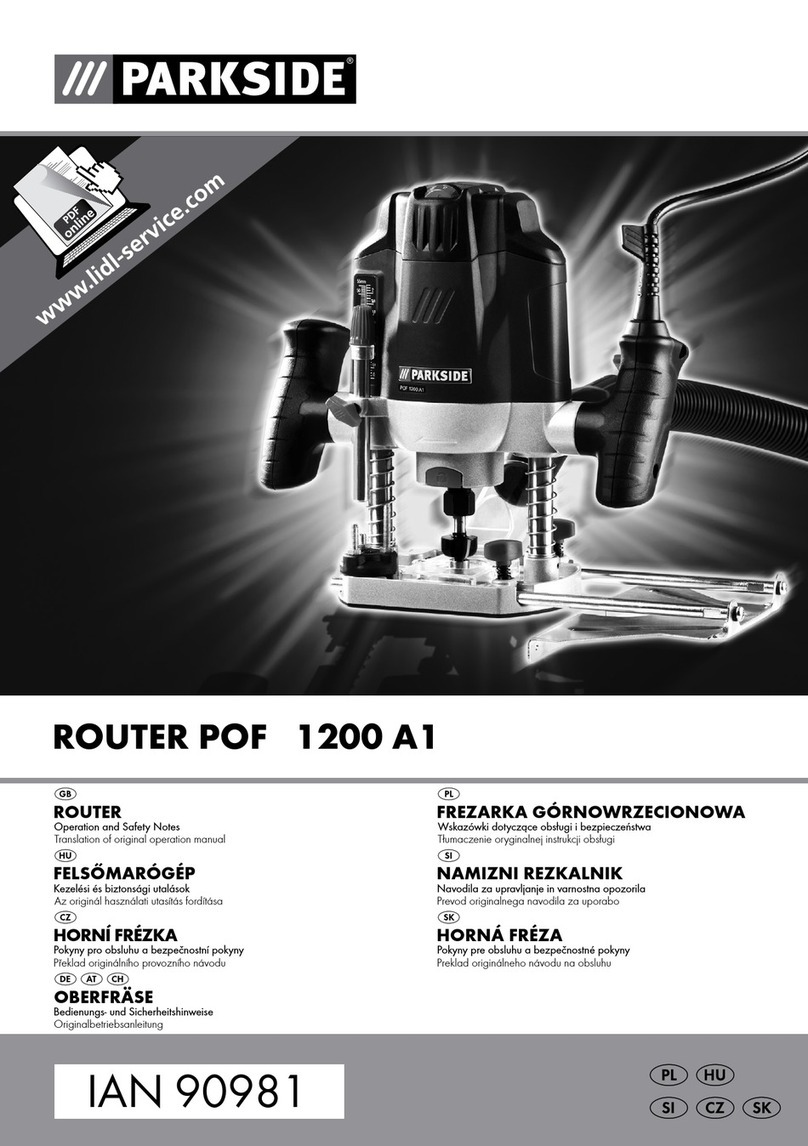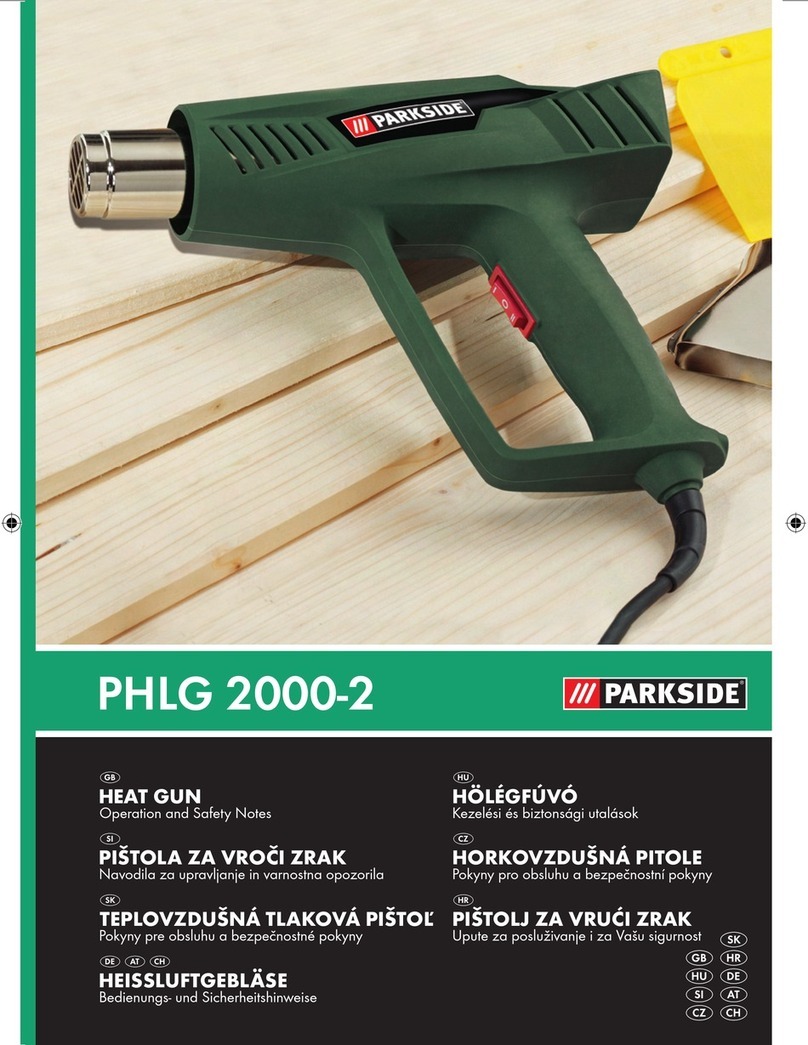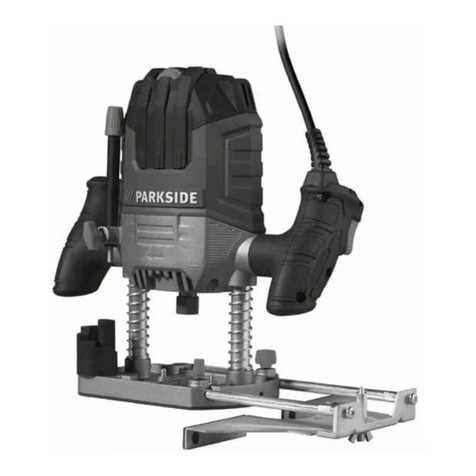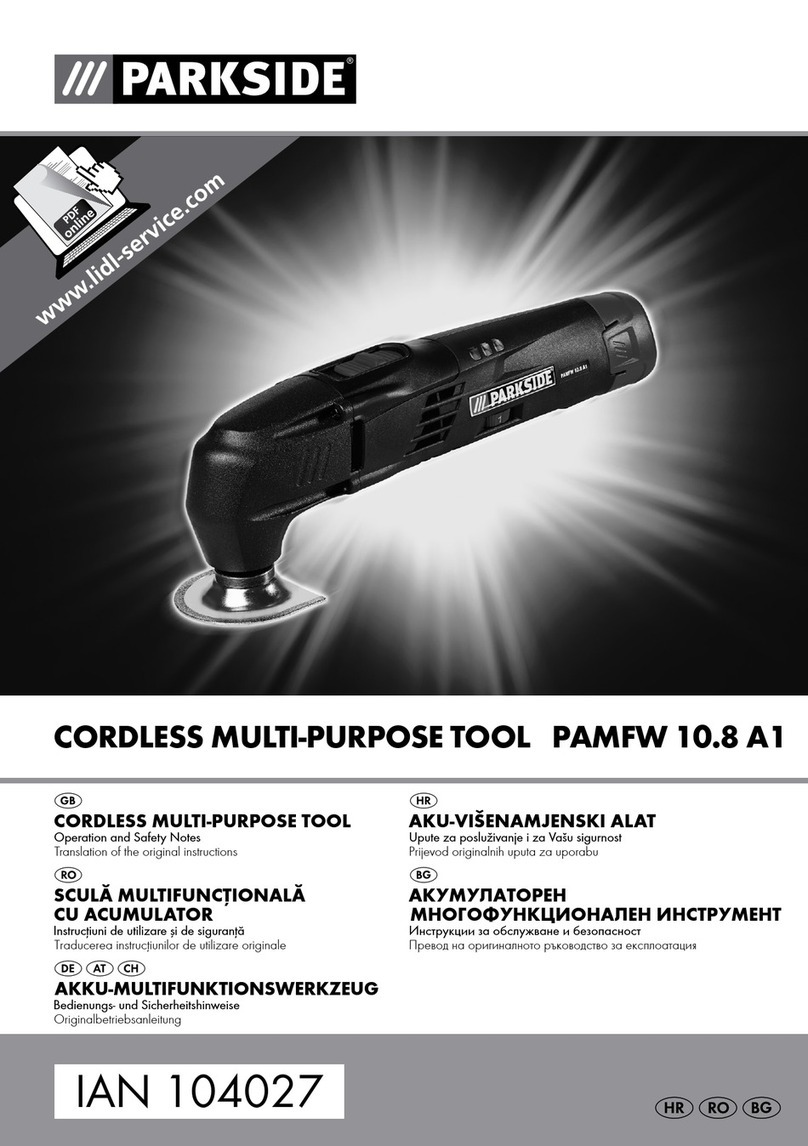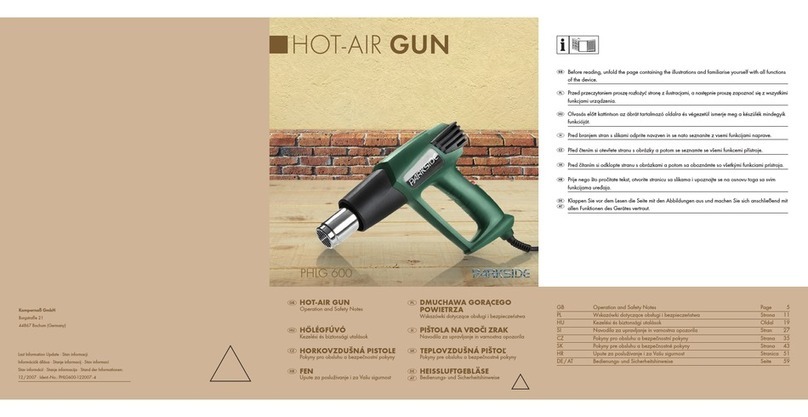Introduction / Safety
Protection class: II /
LSafety
Important safety instructions
specific to the tool
J Keep the tool out of the reach of
children. Store the tool in a dry,
enclosed space, out of the reach
of children.
To avoid danger to life from
electric shock:
J Check the condition of the tool, the
mains cable and the plug regularly.
Do not use tools if any parts are
damaged. Never open the tool. Repair or replacement
must be carried out by the Service Office or an
electrician only. Damaged tools, mains cables or
mains plugs pose a danger to life from electric shock.
JRepairs must only be carried out by an expert or
the responsible Service Office.
JDo not use the tool if it is damp or in damp
conditions.
JWhen working outdoors, connect the tool via a
residual current circuit breaker (RCCB) with a
maximum 30 mA breaking current.
JOnly use an extension cable that is approved for
outdoor use.
JDo not use the tool when it is raining or in wet
conditions.
JAlways lead the mains cable Tto the rear away
from the tool.
To avoid danger to life and risk of injury:
JMake sure that the tool is only operated by
persons over 18 years of age in accordance
with the operating instructions.
JClamp the workpiece tightly in position (with
chucking fixtures or in a vice) or secure it where
it is not held in place by its own weight.
JTake precautions where working with
the tool may generate harmful,
inflammable or explosive dust. Wear a mask to
protect against dust. If you are working on wood
for any length of time, and particularly if you are
working on materials which can generate harmful
dust, connect the appliance to a suitable external
dust extractor system.
JProtect yourself against noise. Wear
ear protectors.
JKeep your working area clean. Mixtures of different
materials are particularly dangerous. Dust from
light metal can burn or explode.
JDo not work with any material containing asbestos.
Asbestos can cause cancer.
JKeep both hands out of the sawing area. Never
reach underneath the workpiece. Contact with
the saw blade can cause injury.
JThe power tool must be switched on when you
apply it to the workpiece. Otherwise there is
danger of kick back if the tool gets caught in
the workpiece.
JMake sure that the sole plate Ois properly in
contact when sawing. If the saw blade wis
skew, it can break or cause kick back.
JWhen you have finished any cutting operation,
switch the power tool off and do not remove the
saw blade wfrom the cut until it has come to
a standstill. This helps to prevent kick back and
allows you to put the power tool down safely.
JOnly use saw blades that are undamaged and in
perfect condition. Bent or blunt saw blades can
break or cause kick back.
JDo not try to slow the saw blade wdown after
switching off by applying pressure from the side.
The saw blade wmay be damaged, break or
cause kick back.
JUse suitable detectors to locate concealed supply
lines, or contact your local utility provider. Contact
with electric power lines can cause fire and electric
shock. Damage to a gas line can cause explosion.
Damage to a water pipe causes damage to
property and can cause electric shocks.
JOnly touch the power tool on the insulated
handle if you are working where the tool can hit
concealed electric power lines or the tool’s own
mains cable during operation. Contact with a live
cable makes the metal parts of the power tool
7GB/IE
